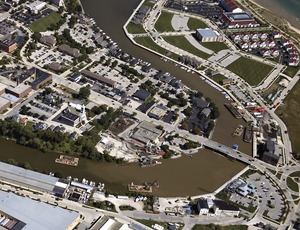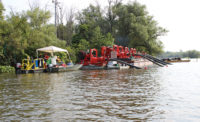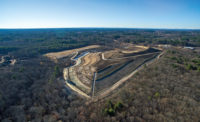Sediment remediation of the Sheboygan River required extensive coordination among regulatory agencies, consultants, private stakeholders, municipal and county governments and contractors.


The last time the federally authorized navigation channel and turning basin were fully dredged was in 1956 due to the presence of polychlorinated biphenyls (PCBs) in the sediment.
By 2012, water depths were as low as 3 ft in portions of the channel, creating restrictions for even recreational boaters.
The overriding purpose of ensuing sediment remediation was to remove sufficient PCB and polyaromatic hydrocarbon-contaminated sediments from the river bottom to provide adequate protection for human health and address degradation of the surrounding fish and wildlife habitat.
A multiyear effort undertaken by the U.S. Environmental Protection Agency coordinated the efforts of several public and private organizations to simultaneously execute three separate dredging and habitat restoration projects during the 2011 and 2012 construction seasons.
Among other challenges, record low water levels prompted team members to adopt a shore-based sediment removal technique. They also employed a prototype clamshell environmental bucket designed for mechanically dredging glacial till river bottoms.
Likewise, crews employed new electromagnetic technology to accurately locate the vertical depth of a utility line under the riverbed and an air-bubble curtain to contain resuspended sediment within the project area.
Using high pressure suction, workers vacuumed sediment at rates up to 60 mph, with the sediment deposited into sealed vacuum boxes that deployed hydraulic force for dewatering.
The tool created minimal resuspension of contaminated sediment and was used to excavate an underwater trench in which perforated pipe subsequently was laid for the air-bubble curtain.
Once the air-bubble curtain was operational, a barge-mounted environmental bucket was used to maximize production rates.




